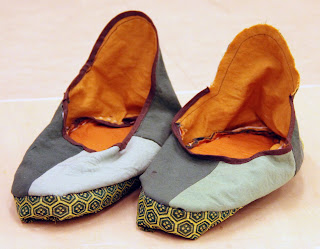

Students attending each Art school must go through exam like other schools but it is not usually paper but what you work on and turn in is an piec(s) of work assigned to you or what you choose as a theme in order to move up a Grade. It is a promotion work to do. Its like a final project to turn in, for example. What I chose (Mine started from October. Each dept. start at different time at KSUA) was color as a theme. I really didnt had any detailed plans to where I want to go or to end up. So I started by studying what color is, color as an concept, RGB vs CMYK color, and difference between western and Eastern color pallet. Since I was lazy and didnt spend much time (also had issues that slowed me down) on it, more spending time on something else; it didnt go far. What happened next was to compare Japanese color pallet and modern scenery to see those color still exist in the very same place where they originated from. I had the result that some didnt exist today where as it did 1000 or 2000 years ago. Reason is that plants changed and the color of leave may of changed when expressed by paint or by dye, fixed to fit the beauty standard or how people saw it and interperited back then. In order to compare them, I collected colors from pictures I took.
So what next after making collections? Well, I made series of idea to use for visual design and city planning. Also I started to make colors I extracted from the sceneries of Kyoto and remade colors from the Japanese color pallet. I thought that the art of dying and textile was the closet aim to deepen the knowledge and feel the cultural definition obtained by combination of certain colors. What could I do with these colors? I pondered and came to a conclusion to go to a traditional things, for example expanding the work of Kimono. What is needed...ah I got it. Shoes.
When people were Kimino or Yukata, shoes are not worn. Just in case of some stupid people reading this; Japanese people do not wear Kimono every day. It is worn on special occasion or what not. Anyhow, traditioally, only nobles and Emperor/Empress wore shoes and others wore sandles. Sandles are cold during cold seasons, and it is more practical to have you feet covered. Also it is not a taboo for ordinary people to wear them. Snow shoes existed only for winter seasons but not usually worn for Street usage. The character for shoes, pointing a traditional one differs from a western one (i.e. what we all wear today, Nike, Reebok, Adidas...etc.) and from this, it is concluded that the meaning and usuage differs.
So I started by researching types of shoes worn backthen, and designed them and making them. This is where the colors I extracted were used after researching what each colors meant and was used culturally. Then what I did next was look for Kimono that fit the consept. The Kimono company that makes then nearby was kind enough to let me borrow them and even help me fit them to my modles and give me a place to shoot pictures. When everything was prepared, it was dark so we had to shoot it inside...
All the pictures were taken inside in a traditional room but it is supposed to be worn outside. This work was displayed on January along with tools I used and with a portfolio I made of this project. It was not popular, rather boring to some people. However, few people gave me a positive feed back. During critique, things were not that positive and other students where not drawn by my attempts. Their interests were at new, modern, and western things. School year ends at March. Febuary is the start of Spring break and for me, this project is not over.
Since this project what I am doing is remaking these shoes for traditional clothe, attempting to use the skills of pattering for Kimono in a new shape, and expanding the traditional clothe more for modern usage and praticality. So, here are some pictures from the project.

glad to see you sharing this with us sho, ive always beeb interested in japanese art and i would mos def. rock those second "kicks" round the crib
ReplyDelete